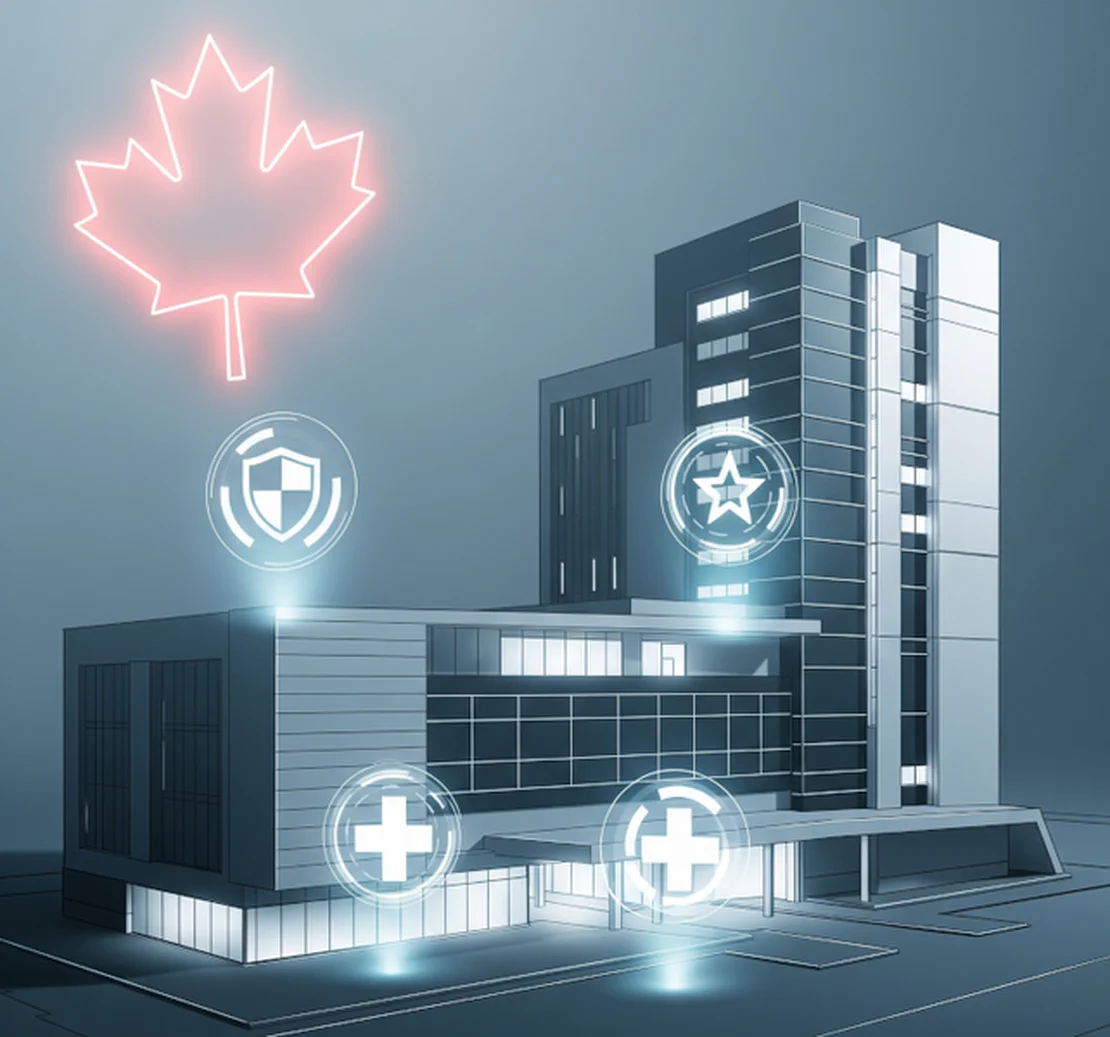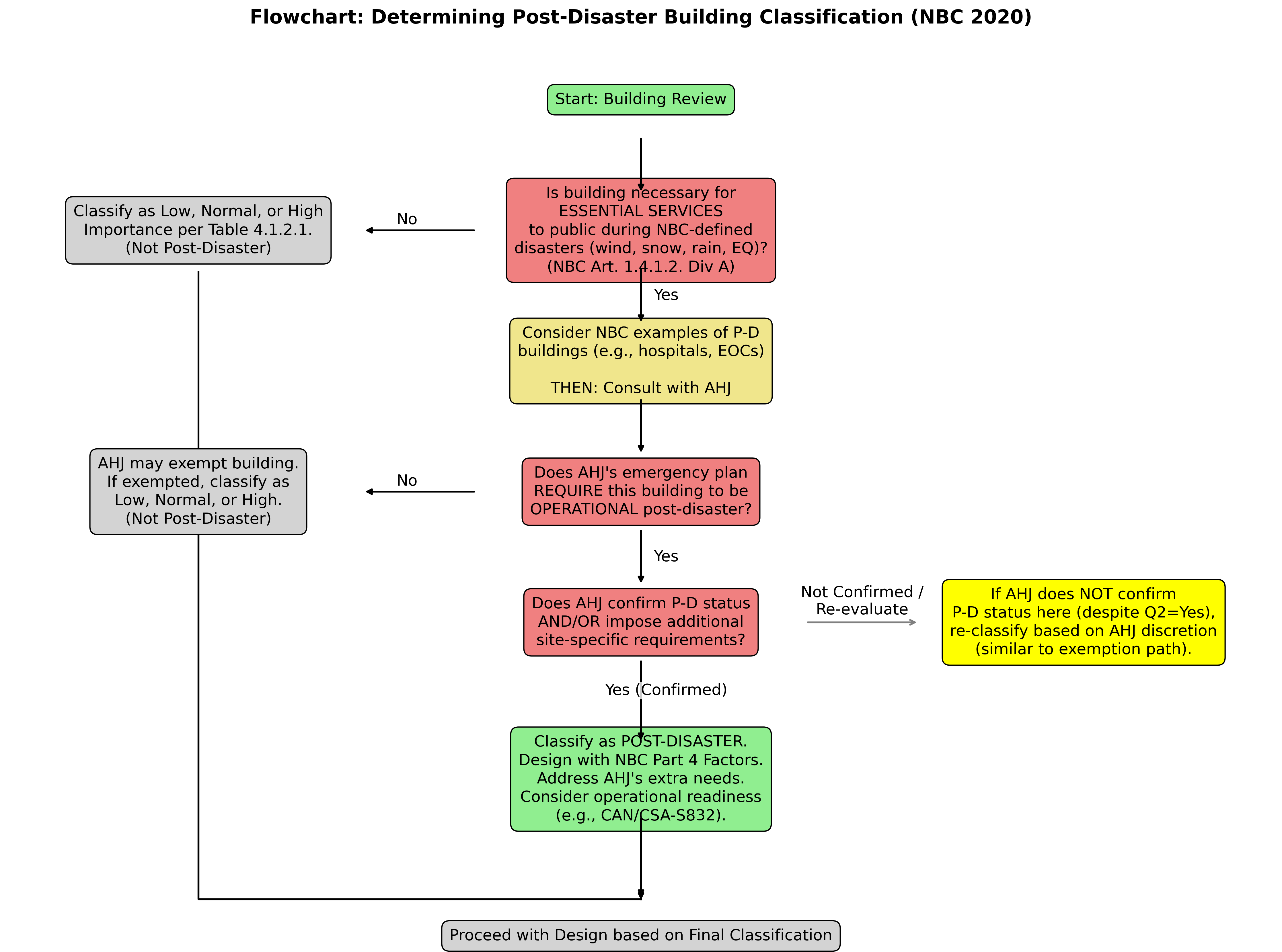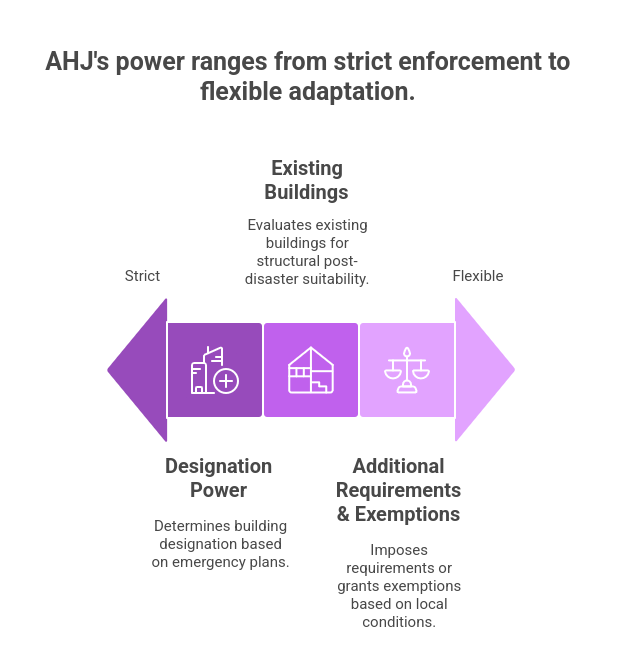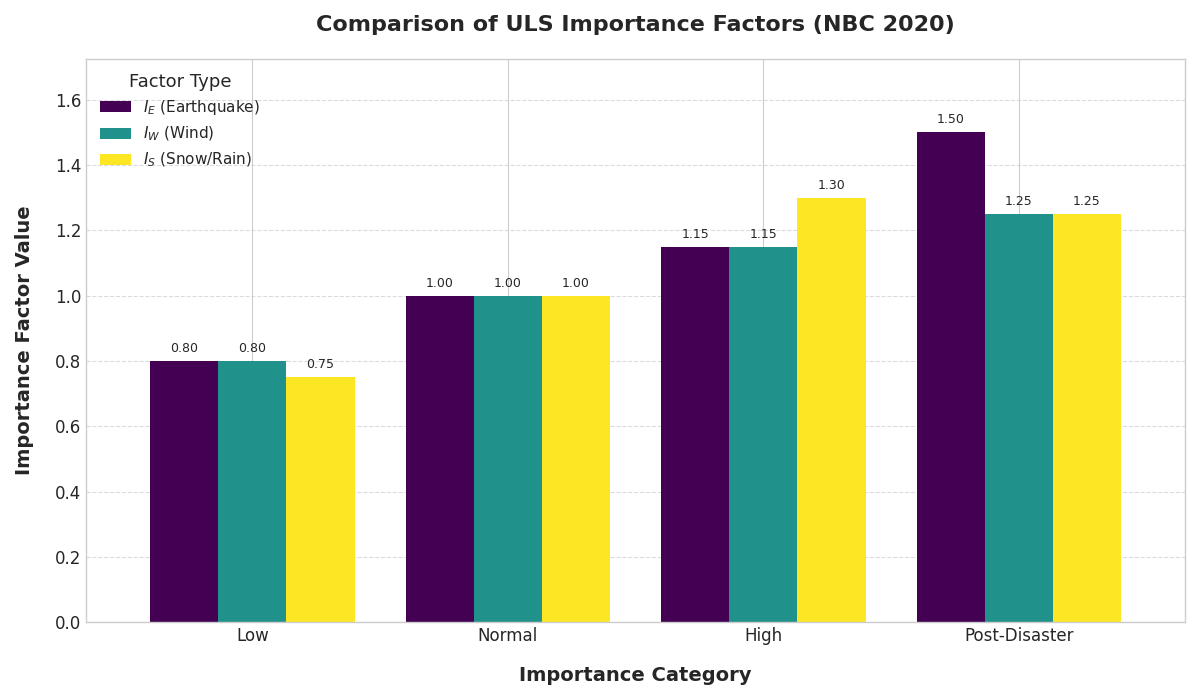Nailing Importance Categories in NBC 2020
- Walk through the occupancy checklist to decide if a building is Low, Normal, High, or Post-Disaster before touching loads.
- Apply the right importance factors—IE, IW, IS—across every load combination, not just seismic.
- Engage the AHJ early when a facility skirts the thresholds; your memo becomes the record for why you did or didn’t upgrade the category.

On this page
Questions about whether a community centre really needs that post-disaster designation, or how much wiggle room the Authority Having Jurisdiction (AHJ) actually has, come up on many projects. The National Building Code of Canada (NBC) 2020 brought some important clarifications and refinements to Importance Categories, and getting them right is crucial for both safety and project viability. It’s about more than picking a label from a table; you need to understand the intent and the real-world implications for your designs.
For junior engineers, this is foundational stuff. For the seasoned pros, there are nuances in the NBC 2020, particularly around post-disaster buildings and AHJ discretion, that are worth a closer look.
Here’s what you need to know about Importance Categories as per NBC 2020 (referencing Part 4 of Division B, and the ever-helpful Structural Commentaries).
What’s in a Category? A Quick Refresher
The NBC 2020, in Table 4.1.2.1., lays out four Importance Categories: Low, Normal, High, and Post-disaster. These categories directly influence the specified loads (Snow, Wind, Earthquake – S, W, E) your structure needs to resist.
- Low Importance: Think minor storage buildings or certain low-human-occupancy farm buildings. These represent a low hazard to human life if they fail (see Note A-Table 4.1.2.1. in NBC2020).
- Normal Importance: This is your default for most buildings that don’t fit the other categories.
- High Importance: These buildings warrant a greater degree of safety. Prime examples from Table 4.1.2.1. include community centres and elementary, middle, and secondary schools. Note A-Table 4.1.2.1 also points to facilities with sufficient quantities of dangerous goods, like petrochemical plants or certain fuel storage facilities.
- Post-disaster building: These are critical. They are buildings “necessary for the provision of essential services to the general public in the event of a disaster” (NBC Article 1.4.1.2. of Division A, clarified in NBC2020-Commentary Commentary A, Para 15).
Practical starting point: Don’t just guess. Table 4.1.2.1. in the NBC 2020 is your starting point. The notes (Note A-Table 4.1.2.1.) provide valuable context and examples.
The “Post-Disaster” Deep Dive
The NBC 2020 put some effort into clarifying “post-disaster.” It’s not just about withstanding an event; it’s about remaining operational for essential services after an event.

- What kind of “disaster”? The NBC Part 4 structural design requirements focus on natural events: wind, snow, rain, and earthquakes (NBC2020-Commentary Commentary A, Para 15). Broader emergencies (floods, pandemics) might be considered by AHJs for operational planning but the structural importance factors are tied to these NBC-defined hazards.
- Examples are key: The definition in NBC Article 1.4.1.2. lists examples, but it’s not exhaustive. Think hospitals, emergency response centres, and now explicitly, control centres for natural gas distribution (NBC2020-Commentary Commentary A, Para 21).
- Intent matters: As Note A-Table 4.1.2.1. points out, a building named “XYZ Hospital” used only for walk-in medical services might be Normal, while “ABC Treatment” used for emergency care should be Post-disaster.
- Operational Readiness: Remember, NBC Part 4 mainly covers the building structure itself. True operational readiness involves much more – equipment, services, non-structural components. For a deeper dive into that, CAN/CSA-S832 “Seismic risk reduction of operational and functional components (OFCs) of buildings” is a good resource (NBC2020-Commentary Commentary A, Para 20).
The AHJ’s Role
One of the significant aspects highlighted in the NBC 2020 commentaries is the flexibility granted to the Authority Having Jurisdiction (AHJ). This isn’t new, but the emphasis is clearer.

- Designation Power: The AHJ has significant say in determining which buildings are designated Post-disaster, especially at the local level (NBC2020-Commentary Commentary A, Para 16). Their emergency plans are paramount.
- Existing Buildings: If an AHJ’s emergency plan relies on an existing community centre or school as a post-disaster facility, they should be evaluating if it meets the structural requirements (NBC2020-Commentary Commentary A, Para 18). This is a crucial point for municipal engineers and consultants working with them.
- Additional Requirements & Exemptions: AHJs can impose additional site-specific requirements (e.g., for flood-prone areas or critical national defence functions). Conversely, they can also exempt certain buildings from a Post-disaster designation if local conditions warrant it (NBC2020-Commentary Commentary A, Para 19). This recognizes their unique understanding of local needs and risks.
In practice: Early communication with the AHJ is invaluable, especially for projects that might fall into High or Post-disaster categories or have unique site conditions. Don’t assume; ask.
Importance Factors: The Numbers Game (IE, IW, IS)
Once you’ve nailed the Importance Category, it translates into Importance Factors (IE for earthquake, IW for wind, IS for snow/rain). These factors directly scale your specified loads for Ultimate Limit States (ULS) and, with different values, for Serviceability Limit States (SLS).
The Structural Commentaries (NBC2020-Commentary , Table A-2 and Paras 23-27) give a good rundown:
ULS Factors: These reflect the desired level of safety against collapse.
- Low: \(I_E = 0.8\ |\ I_W = 0.8\ |\ I_S = 0.75\). There’s also a potential 0.8 factor for live load (Para 26).
- Normal: \(I_E = 1.0\ |\ I_W = 1.0\ |\ I_S = 1.0\)
- High: \(I_E = 1.15\ |\ I_W = 1.15\ |\ I_S = 1.3\). (Note the higher factor for snow!)
- Post-disaster: \(I_E = 1.5\ |\ I_W = 1.25\ |\ I_S = 1.25\)
SLS Factors: These are generally 1.0 or less because serviceability issues (like excessive deflection or vibration) have less severe consequences than collapse.
- For all categories: \(I_E = 0.75\ |\ I_W = 0.9\ |\ I_S = 0.9\) (as per Table A-2 in the Commentaries).
Design impact: The jump in Importance Factors, especially for Post-disaster buildings at ULS, can significantly impact member sizes, connection details, and foundation design. It’s not a minor adjustment.

What Doesn’t Get an Importance Factor?
It’s also important to remember what isn’t typically modified by an Importance Factor directly: Dead Loads (D) and standard Live Loads (L) due to use and occupancy (NBC2020-Commentary Commentary A, Para 27). The specified values in NBC Table 4.1.5.3 already account for occupancy type consequences. The exception is the 0.8 factor on live load for Low Importance Category buildings mentioned earlier.
Pulling It Together
The NBC 2020’s approach to Importance Categories pushes us to think more critically about a building’s role, especially in emergencies. The enhanced clarity on “post-disaster” and the role of the AHJ empowers local decision-making while ensuring a consistent framework.
For junior engineers, mastering these concepts is a vital step. For senior engineers, the code’s evolution encourages ongoing dialogue with AHJs and a deeper consideration of community resilience.
Disclaimer: This blog post is for informational purposes only and should not be taken as specific engineering advice. Always consult the latest edition of the National Building Code of Canada and relevant CSA standards for your projects.
Next up for you
Standards, Design Principles
Mastering NBC 2020 Load Combinations
A practical guide to NBC 2020 load combinations. Demystifying the companion action principle, principal vs. companion loads, and special …
Keep reading →Standards, Design Principles, Industry Insights, Practical Applications
Part 4's Leap vs. Part 9's Sticking Point
A deep dive into the NBCC 2020 seismic updates, comparing Part 4's evolution with CanadaSHM6 and Part 9's lag, and what it means for your …
Keep reading →Standards, Design Principles, Industry Insights, Professional Development
Tracing the Evolution of NBC Structural Design
A look back at how structural design in the National Building Code of Canada has evolved. Understanding the shift to Limit States Design …
Keep reading →Was this helpful?
Tell us what to cover next or request a deeper dive—every response goes straight to Arun.